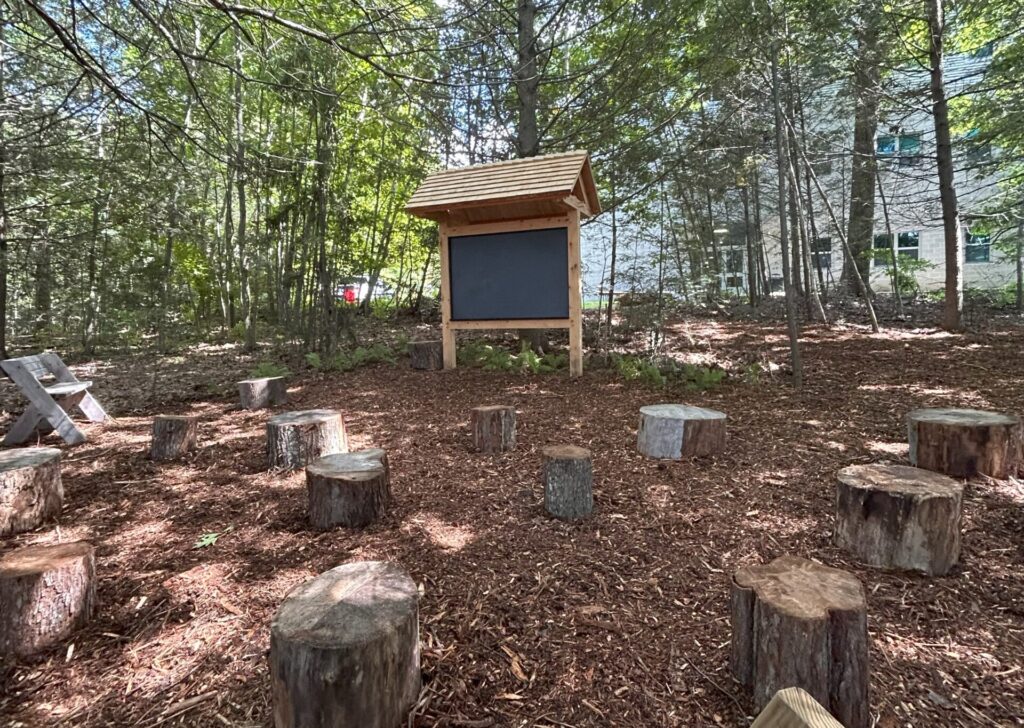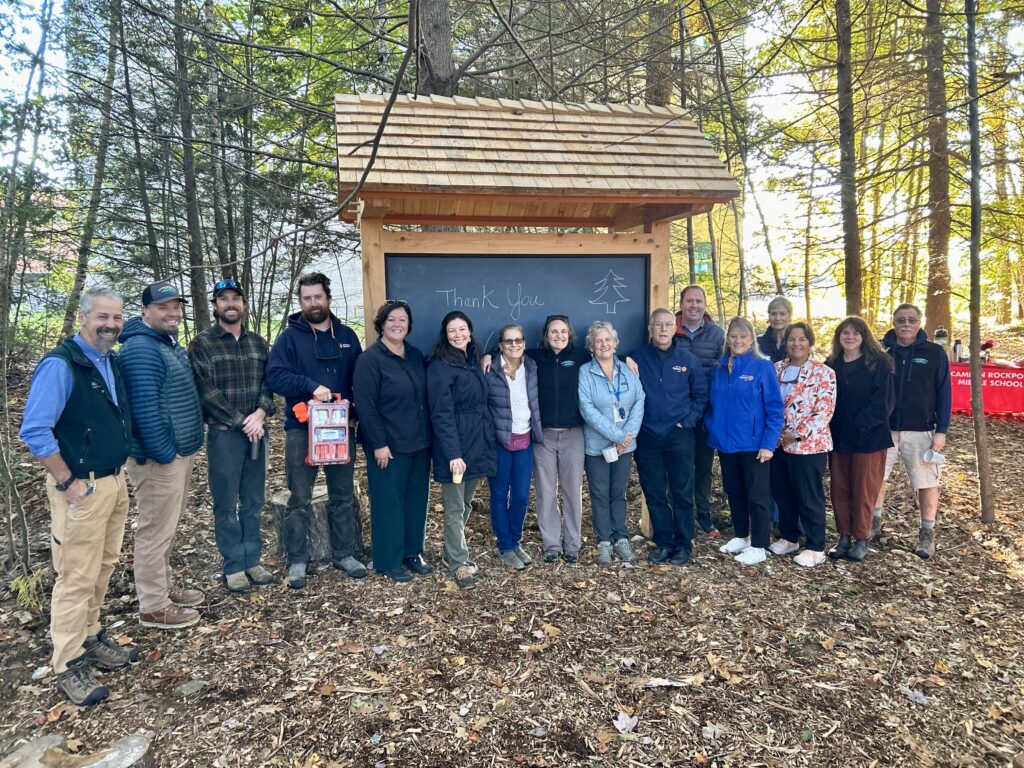News Feed
- A Classroom Without Walls
- Donation for Waldo County Conservation Initiative
- Wildflowers Living on the Edge in Newfoundland
- WALDO COUNTY INITIATIVE SURPASSES YEAR ONE GOALS
- WALDO COUNTY CONSERVATION INITIATIVE FUNDRAISING UPDATE
- WINTER COMMUNITY EVENTS RECAP
- LEARNING LANDSCAPES LEADERSHIP SUMMIT
- FIELD REPORT
- Coastal Mountains Land Trust Conserves First Preserve in the Town of Waldo
- WHISTLING THROUGH WEDNESDAY WORK CREW
- BIRDS BEYOND THE WINDOW
- LATE SEASON PHOTOS
- WELCOME NEW BOARD MEMBERS
- TRAILHEAD UPDATES AT THE MEADOW BROOK PRESERVE
- INVASIVE PLANTS
- ACCESS IMPROVEMENTS AT BEECH HILL PRESERVE
Current News
A Classroom Without Walls
November 19, 2024

The Camden Rockport Middle School (CRMS) has added a brand-new classroom, without walls! This open-air educational space is the result of a collaboration between the middle school and Coastal Mountains Land Trust. In a time when screens and speed are a way of life, the middle school is so grateful to have expanded outdoor access to their students.
The Land Trust has a progressive outdoor learning program, Learning Landscapes, designed to eliminate barriers to outdoor learning by responding to teachers’ visions for moving their curriculum outdoors. Their “River Walk Classroom” was envisioned by Jaime Stone, the school principal, Elphie Owen, the school’s Math intervention teacher and environmental club leader, and John Dietter, the school’s innovative seventh-grade science teacher.
The Land Trust and the CRMS faculty worked together to map out an educational space that emphasizes the beauty of their landscape and offers a location to teach all subjects, providing the potential for students to be outside multiple times throughout the day. Since the classroom is nestled in a hemlock grove, students can experience the mental health and emotional regulation benefits of being immersed in a biodiverse space, while continuing to learn.
Camden Rockport Middle School and Coastal Mountains Land Trust would like to acknowledge the generosity of the community, which made this project feasible. Tamarack Builders created and installed the outdoor chalkboard, donating all their time and materials. The West Bay Rotary of Camden funded an exquisite piece of slate, locally sourced from the family-run business, Sheldon Slate, in Monson, Maine. Treeworks, a local arborist company, cut and delivered stump seating and donated woodchips to protect the forest floor from compaction. Camden High School’s Hatchery program created up-cycled benches. John Powers, a local craftsperson and long-time Land Trust volunteer, offered his time to draw the initial design of the chalkboard. Additional supportive partners throughout the project include the Stewardship Education Alliance, the Learning Landscapes committee and administrators from the greater Five Town school district.
The fact that all the materials were sourced from Maine (or up-cycled) and built by locals speaks to the community-oriented nature of this project. Stay tuned for continuing and future collaborations between Coastal Mountains Land Trust and local schools!

Donation for Waldo County Conservation Initiative
November 17, 2024

A massive thank you to our friends and members of the Belfast Co-op for so generously supporting Coastal Mountains Land Trust’s efforts to conserve land in Waldo County for wildlife, sustainable recreation, outdoor learning and climate resilience!
Thanks to community support we’ve protected over 750 acres over the passed two years… and have four projects lined up now to reach more than 1150 acres in just 3 years.
We continue to strive to reach a year end goal of $70,000 from individuals to provide the match needed to secure several large grants that will make this all possible. Visit coastalmountains.org to make a gift… and mention Waldo County Conservation Initiative in the “What Motivated your donation” box.


